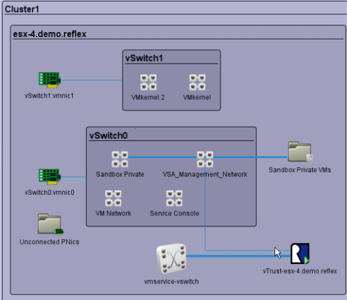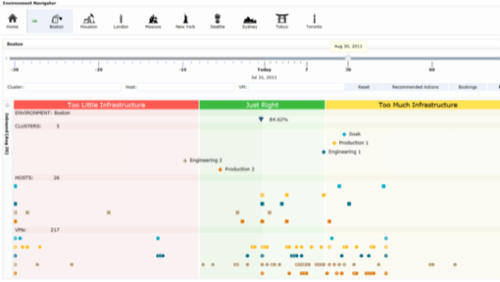One of the hardest things to handle in network or cloud troubleshooting is when something breaks and you are trying to track down why. What did you do to change things that resulted in the problem? Getting at the root of your changes can be difficult, particularly in the case of complex environments that have multiple dependencies and interlinked services. Three vendors, some of whom made announcements at VMworld, are getting the idea from Cher to “turn back time” and show you what your network looked like in the past when it was still working. It is a dandy idea.

This post sponsored by
. Don’t get stuck in the IT past. Our private cloud solution is built for the future, and ready today.
Certainly, there have been packet capture programs around almost as long as Cher’s recording career (maybe not back to when she and Sonny were together, but still). The problem with these tools – like the Sniffer and Etherpeek – is that they have to be running and capturing packets so you can review what happened. Chances are, most of the time you don’t know you need them until something breaks., and then it is too late to reproduce the problem.
And yes, there are log files, but again, looking through them is like finding that proverbial needle. The effort is tedious and if your attention wavers for just a moment, you could miss that one key entry that will provide your explanation, if you even know what to look for.
Wouldn’t it be nice if vendors could add in this “Cher” feature to their products to turn back time to the past? Here are two that have done so, for very different purposes, but still get the idea.
Reflex Systems’ Virtual Management Center has the ability to track changes to your virtual infrastructure using its built-in timeline. You can turn back the clock and look at what has happened to your network to do further troubleshooting, to find out when the user in distress messed up some configuration parameter a few days ago, for example. The software brings the same kind of of network infrastructure controls that are seen in the physical world such as firewalls and intrusion detection. Plus, they have some cool network maps as you can see here.

The second product is from Meru, who sells a variety of wireless access points and management tools, including some that use virtualization in some clever ways. New for them is the Service Assurance Manager v1.2, which provides proactive diagnostic abilities including rewind and review. This capability allows network managers to pinpoint network connectivity issues that occurred in the past and proactively make adjustments to avoid them in the future.
The third product is from CiRBA, which sells its Data Center Intelligence subscription service. This week they announced v7, which includes an improved UI, better automation tools and the ability to book future capacity for anticipated workloads. Their software is used for physical to virtual conversions and in data center consolidation and workload provisioning.
The UI in particular is quite stunning, as you can see in the screenshot below. At a glance I can see the entire lay of my data center landscape, and the little dots represent whether you have the right level of infrastructure or not for the loads that are running on these services. You can drill down to get more specifics. They aren’t just looking at CPU or RAM usage, but measuring how the servers measure up to a such VM-specific metrics such as high availability and VM security zone usage. And you can both see what happened in the past as well as model what will be predicted to happen in the future.
The service will be released at the end of the year and is subscription based on the number of servers and the length of time it is being used.

Now, obviously, you aren’t going to rush out and buy any of these products just so that you can visit the past. And while I don’t think the engineers at either company were thinking of Cher when they designed their products, I do believe that both are strong enough and all I really want to do is have my network beat go on here when I use them. Babe.










